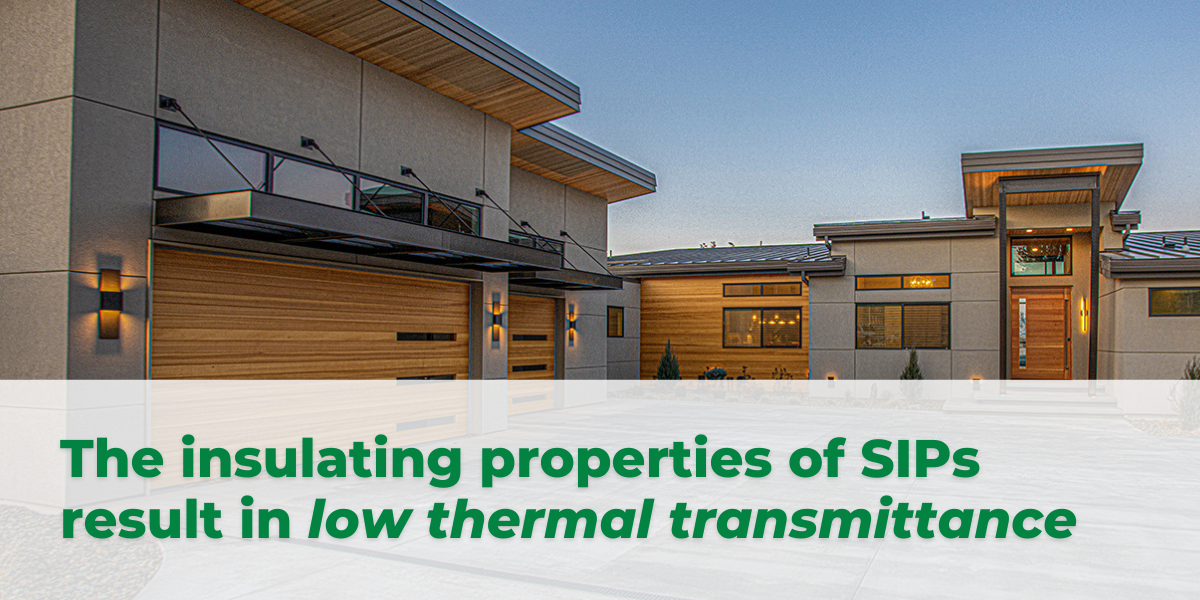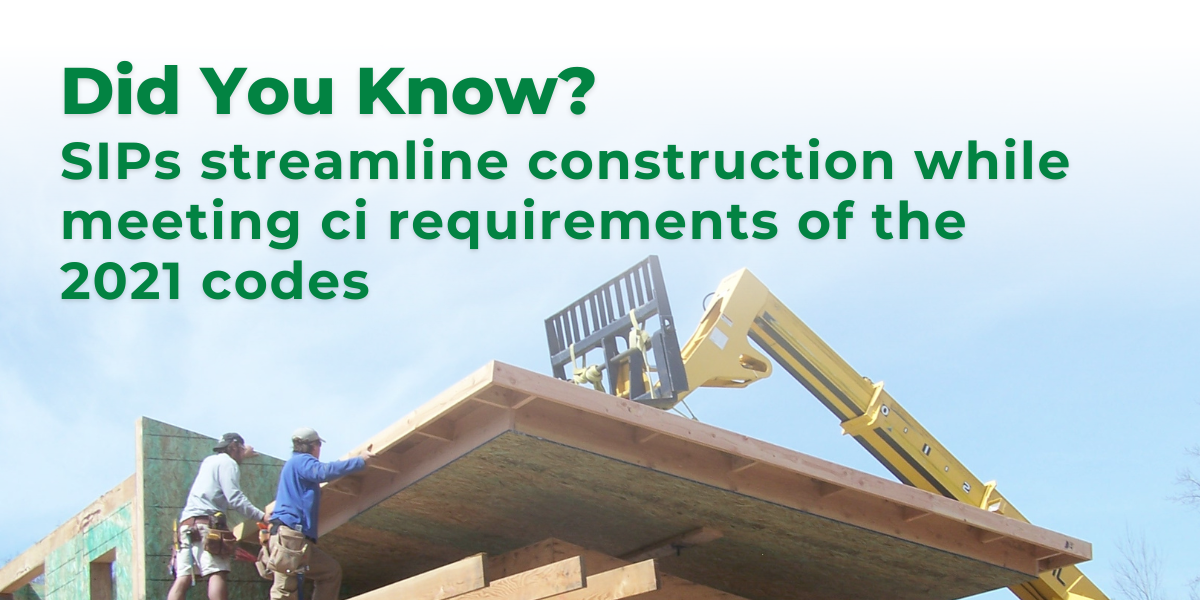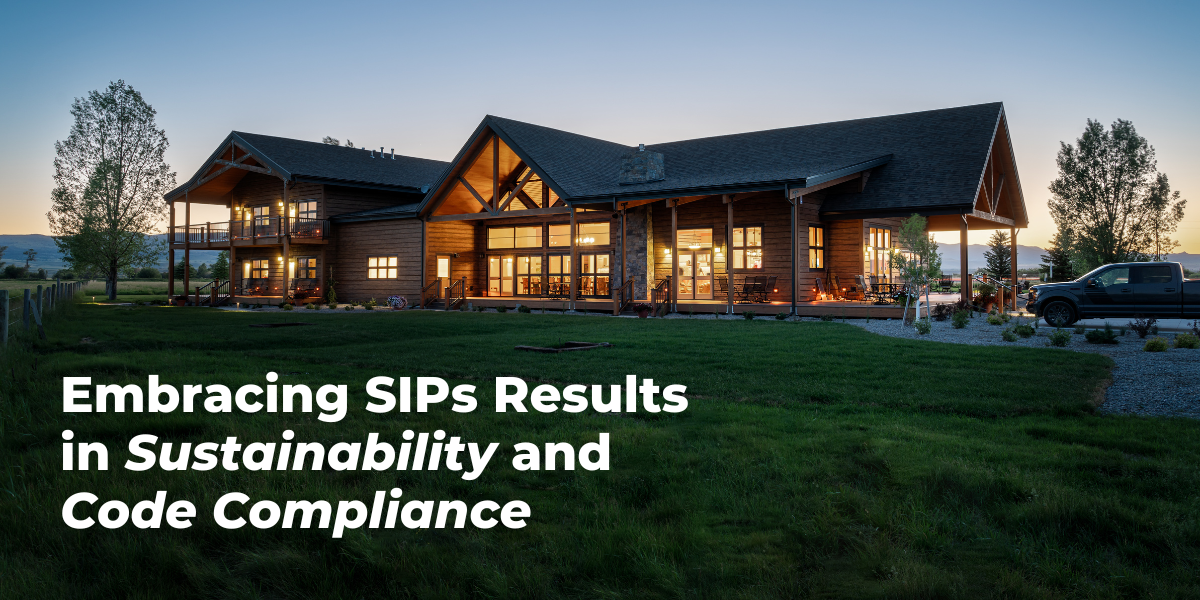The Intelligent Way to Build: Why SIPs Beat 'Cheaper' Every Time
Discover why SIPs are the smartest investment in building—delivering precision, performance, and long-term value that..
As we stride into a more sustainable and energy-conscious future, the building and construction industry plays a vital role in shaping our environmental impact.
The year 2021 marked a significant milestone with the introduction of updated building and energy codes. These regulations not only set the benchmark for construction practices but also ushered in a new era of regulations designed to enhance energy efficiency and reduce both carbon footprints and environmental impact.
Among these building and energy code changes, structural insulated panels (SIPs) have emerged as a leading solution for code compliance, surpassing traditional construction methods in meeting code requirements.
Dive in below to explore some of the key updates and changes in the 2021 building and energy codes that are reshaping the way we build, and how SIPs offer an efficient way to exceed the new requirements.
One of the most groundbreaking updates in the 2021 building codes is the increasing focus on achieving net-zero energy standards. With the growing concern over climate change and energy consumption, these codes encourage the construction of highly efficient buildings that generate as much energy as they consume.
This emphasis on net-zero energy not only reduces greenhouse gas emissions but also leads to substantial long-term savings on energy bills for building owners and occupants.
The 2021 energy codes place a strong emphasis on improving energy performance across all types of buildings. From residential to commercial and industrial structures, the updated codes enforce stricter energy efficiency requirements for building envelopes, lighting systems, HVAC (heating, ventilation, and air conditioning) systems, and more.
Building designers and contractors are now tasked with integrating innovative energy-saving technologies and renewable energy sources to meet these rigorous standards.
With a focus on accurate energy evaluation, the 2021 codes have embraced the Performance Path, placing an emphasis on U-factors for assessing building envelope performance. U-factors, also known as thermal transmittance, measure the rate of heat transfer through a material.
In this context, SIPs shine brightly, boasting low U-factors due to their high thermal resistance. The excellent insulating properties of SIPs ensure they outperform conventional construction materials, meeting and even exceeding the stringent performance standards set forth in the Performance Path.

The building envelope, consisting of walls, windows, roofs, and insulation, is crucial in maintaining thermal comfort and minimizing energy losses.
In the 2021 International Code Council (ICC) building codes, there is a notable emphasis on enhancing building envelope performance. Stricter standards for insulation, air sealing, and fenestration help prevent thermal bridging and air infiltration, leading to reduced heating and cooling loads and improved overall building energy efficiency.
The 2021 building code also raises the bar for air exchange rates, now requiring 3 air changes per hour (ACH). Traditional construction often struggles to meet this stringent requirement. However, SIPs offer a remarkable advantage by typically achieving air exchange rates below 1 ACH.
The inherent airtightness of SIPs, owing to their precision manufacturing and advanced sealing techniques, ensures minimal air leakage. This outstanding performance not only reduces energy loss but also enhances indoor air quality, fostering a healthier and more comfortable living or working environment.
In compliance with the new code, structures are now required to incorporate Continuous Insulation (ci) into building envelope assemblies to minimize thermal bridging and improve energy efficiency. The beauty of SIPs lies in their natural ability to qualify as continuous insulation.

The uninterrupted layer of foam core sandwiched between oriented strand boards (OSB) creates a seamless insulation envelope, ensuring minimal heat transfer through the walls and roofs. By eliminating the need for additional insulation layers, SIPs streamline construction while meeting the rigorous ci requirements of the 2021 codes.
To further promote sustainability and resiliency, the 2021 building and energy code changes prioritize energy storage solutions and the seamless integration of renewable energy sources.
This includes incentivizing the installation of solar panels, wind turbines, and other renewable energy systems, as well as encouraging the use of energy storage systems to balance energy demands and supply during peak hours. These advancements not only reduce dependency on non-renewable resources but also offer greater energy independence for building owners.
The 2021 international building codes recognize the potential of smart building technologies in optimizing energy usage and enhancing occupant comfort.
Integrating smart systems for lighting, HVAC, and building automation allows for real-time monitoring, control, and optimization of energy consumption based on occupancy patterns and ambient conditions. These technologies not only align with sustainable goals but also pave the way for a more interconnected and responsive built environment.
As we journey towards a sustainable and energy-efficient future, the 2021 building and energy codes lead the way in shaping construction practices. Among the numerous solutions available, SIPs stand out as an exemplary choice that excels in crucial areas of the updated codes.
SIPs not only surpass the required air exchange rates, but they also serve as continuous insulation, eliminating thermal bridging and enhancing overall energy efficiency. Furthermore, by leveraging U-factors in energy calculations, SIPs prove to be an environmentally responsible option that ensures optimal building envelope performance.
Embracing SIPs and integrating them into building projects not only meets code requirements but also fosters a greener, more sustainable built environment.
As the construction industry continues to evolve, SIPs remain at the forefront of innovation, empowering us to create structures that are not only energy-efficient but also contribute positively to the well-being of occupants and the planet as a whole.
The 2021 building and energy codes are revolutionizing the construction industry by promoting sustainable practices and advancing energy efficiency.
By embracing net-zero energy standards, strengthening energy performance requirements, integrating renewable energy, and implementing smart technologies, the codes are transforming the way we design, construct, and operate buildings.
As these updated codes become more widely adopted, we can expect a significant reduction in greenhouse gas emissions, increased energy independence, and a greener, more resilient future for generations to come. Embracing these building code changes is not only a responsibility but an opportunity to create a positive impact on the world we live in.
Learn more about the sustainability of SIPs here.
Discover why SIPs are the smartest investment in building—delivering precision, performance, and long-term value that..
Lumber tariffs driving up costs? SIPs cut lumber use by up to 80%, lower labor needs, and deliver stronger, faster, more..
Discover how Structural Insulated Panels outperform stick framing by cutting energy use 40–60%, reducing waste, and saving..
High-performance buildings start with better systems.
Premier SIPS deliver a building envelope that outperforms traditional framing in efficiency, strength, and long-term durability. If your project demands higher performance and greater predictability, let’s talk.